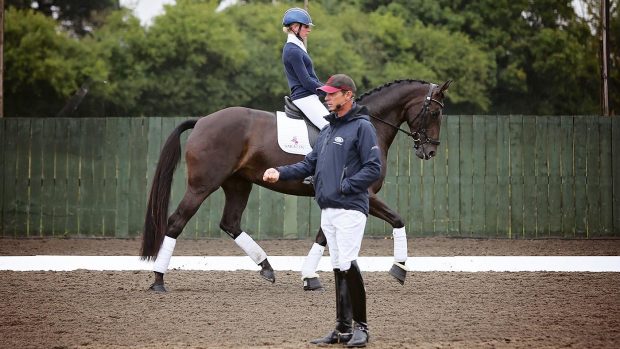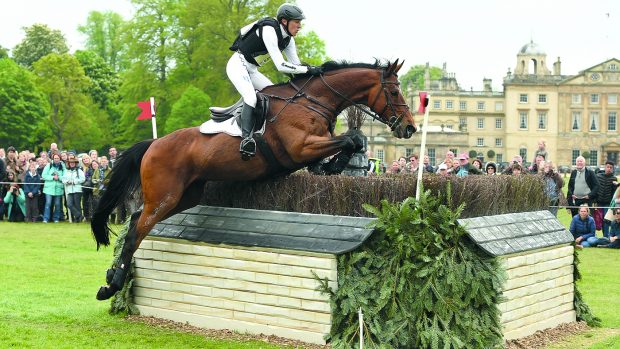Wobbly hands weren't helping Susie White's 14.3hh mare's paces. 18 months of hard-work later and the pair have achieved their first novice horse trials win, thanks to the help of trainer Charlotte Ridley
Maintaining quiet hands and allowing your horse to connect from the hind leg to the rein is a fundamental way of improving his paces as student Susie White from Hexham discovered, following a year and a half of regular lessons come rain or shine with her trainer Charlotte Ridley.
All that hard work was rewarded when Susie had her first novice win at Cholmondeley Castle horse trials [27-28 July] on her 14.3hh mare Heaven Eyes. Susie described Heaven as not having “natural paces or a particularly careful jump”, so we asked Charlotte how they achieved their winning result?
“Heaven is the most generous of horses but not what you’d describe as an obvious dressage pony,” says Charlotte. ”Susie and I worked hard in the early days to develop her paces and to give Susie an understanding of stillness through the reins and connection from the hind leg to the rein.
“Susie had what I would describe as wobbly hands syndrome and consequently Heaven had wobbly head syndrome. We spent 5 months working on being still through the contact and once that was sorted out, everything just followed on. Susie worked very hard — the aim was to get her to turn Heaven from her hips and her body rather than with hooks and fiddles.
“We’d do exercises like a three or four loop serpentine, but Susie wouldn’t be allowed to open the inside rein to turn Heaven and she would have to keep her hands parallel through the turns. Once she had that mastered Heaven started to move much more freely.”
What’s your USP?
I think I’ve got a good sense of humour and make training fun. Hopefuly I know when to push and when to hug — I adore my job.
What’s your pet hate
People not clearing the poos up in my lovely arena.
Share with us your signature exercise
I do a lot of work with grids, but I think my favourite is working on shortening and lengthening strides down the long side of the school in canter.
I begin by asking the rider to guess how many strides down the long side between K and H or F and M – it’s interesting what people think! (The average in canter in my 60m arena is about 16.) I then explain that the distance between, for example, K and E, the half way marker, and E and H is equal. So we begin by riding the correct number of strides but then I’ll get them to shorten from 16 strides to 14 or lengthen them from 16 to 14 and then 12. Once that has been mastered we’ll move to varying the number of strides from K to E and from E to H, so, say 9 strides between K and E and 6 strides between E and H. It’s a really good fun exercise that riders can go away and practice, but it really helps establish a sense of rhythm.
What’s the best bit of advice you’ve ever been given?
I always say when you are teaching it’s like going to a big buffet — you don’t expect people to devour the entire table, but if they come away with a sausage roll and a bit of cheese you are happy. If you can say one phrase that resonates or change one bit of the body that might improve a rider’s position, that’s satisfying. I think it was the late showjumper Kenneth Clawson who told me that.
If we were to ask your pupils, what would be the one thing they all say you continually shout?
Get your bum out of the saddle!
To contact Charlotte visit www.parkendequestrian.co.uk



